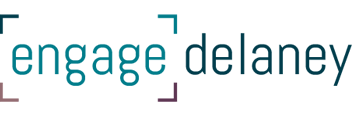Three Big Themes We’re Seeing Right Now
End of government fiscal year is always a bit of a blur. We’re sorry we were less than engaging online, but we were running pretty quick to get everything done by March 31. With many different projects going on, across many different sectors and provinces, we saw three themes that we believe are transformative for the field of engagement. These are more than trends – a trend suggests a timeliness that might not be here to stay, but these themes, we believe create a new, permanent way of thinking about engagement.
Top three themes we believe are changing the landscape for engagement…
1. Relationship vs. Transaction
Think of a relationship you have with friends and family – are there people who come to you only when they need something? It doesn’t feel good, and if you’re like me, you likely will not put up with it forever. Relationships with organizations are the same way. Good public relations professionals, and marketers, know that being present is a requirement for building a meaningful relationship. For engagement, it’s the same, but different. The difference is that with engagement, there always needs to be a decision, or a statement of intent, a changed state.
The theme we are seeing is that transactional engagement is only minimally effective. This is in part because of the second theme, but also because people/stakeholders are busy and if an organization is not willing to invest in a relationship with them, they are less likely to invest in providing high-quality, thoughtful and robust input. When organizations build the capacity and a culture of consultation, we are seeing that engagement is more rich and meaningful because there is a relationship which is mutually beneficial in nature.
2. Co-creation vs. Option Selection
For engagement to be authentic, there need to be options. If there are no options, then it’s a public relations process in which the project proponent communicates what has been decided. In engagement, there are generally options on which stakeholders and/or the public can provide input. In the world of the International Association for Public Participation (IAP2), this is the level of consult. In my world, as a three-year-old at Baskin and Robbins, I would freak out and cry because there were too many options – 31 flavours to choose from – and so my mom would say: “You can have chocolate, vanilla or strawberry.” She consulted me on three options, and it worked for both me and my mom.
Increasingly, however, we are seeing that it doesn’t work for publics or stakeholders. More often than not, stakeholders are seeking to co-create or co-design viable options with the decision maker, or project proponent. There are any number of reasons why this theme is emerging, but my hunch is that public confidence in government and industry is low, and so there is very little trust in the decision making process and how the options were developed. If the Edelman Trust Barometer is any indication, Canadians moved from “trusters” to neutral over the past year. While this might make government and industry more apprehensive about engaging their publics and stakeholders, it shouldn’t.
By co-creating options, organizations can:
- Save time and money by not developing options which are technically and fiscally achievable, but which garner little social transaction.
- Build, as opposed to erode, their social capital and social license to operate. Going out with “bad” (aka unpopular options) hurts your brand, reputation and ability to build meaningful relationships with stakeholders, and co-creation here helps to mitigate this risk.
- Co-creation invites innovation, and innovators thrive. Why wouldn’t you want to harness the talent, energy, wisdom of others into your organization? The best options might be out there, and not inside your organization where people can be siloed into thinking which aligns with their areas of expertise and not necessarily innovation.
3. Projects vs. Principles
Organizations almost always engage stakeholders on projects. There’s a decision to be made, for a specific project, at a particular time. People, conversely, almost always want to be engaged on principles or values. For example, there might be a proposal to build a new condo development and a developer is seeking input on massing, design or the public realm. The community wants to be engaged on those topics, but they are primarily interested in what the development will do to their neighbourhood. Will it bring more traffic, or will it help to revitalize it? Will it make the neighbourhood more vibrant and liveable, or will it cast shadows and increase congestion? Facilitating dialogue which speaks to the community’s values, or principles, is going to be far more meaningful and effective, but only if an organization has done their homework (pre-consultation) to understand what is important to that particular community.
Projects come and ago, but the reality is that communities hold their principles close to their hearts and can either support a project which they believe aligns with their principles or fight a project which is seen as compromising them.
These three themes are what we’ve observed across sectors and across Canada. What do you think? What have you seen?


